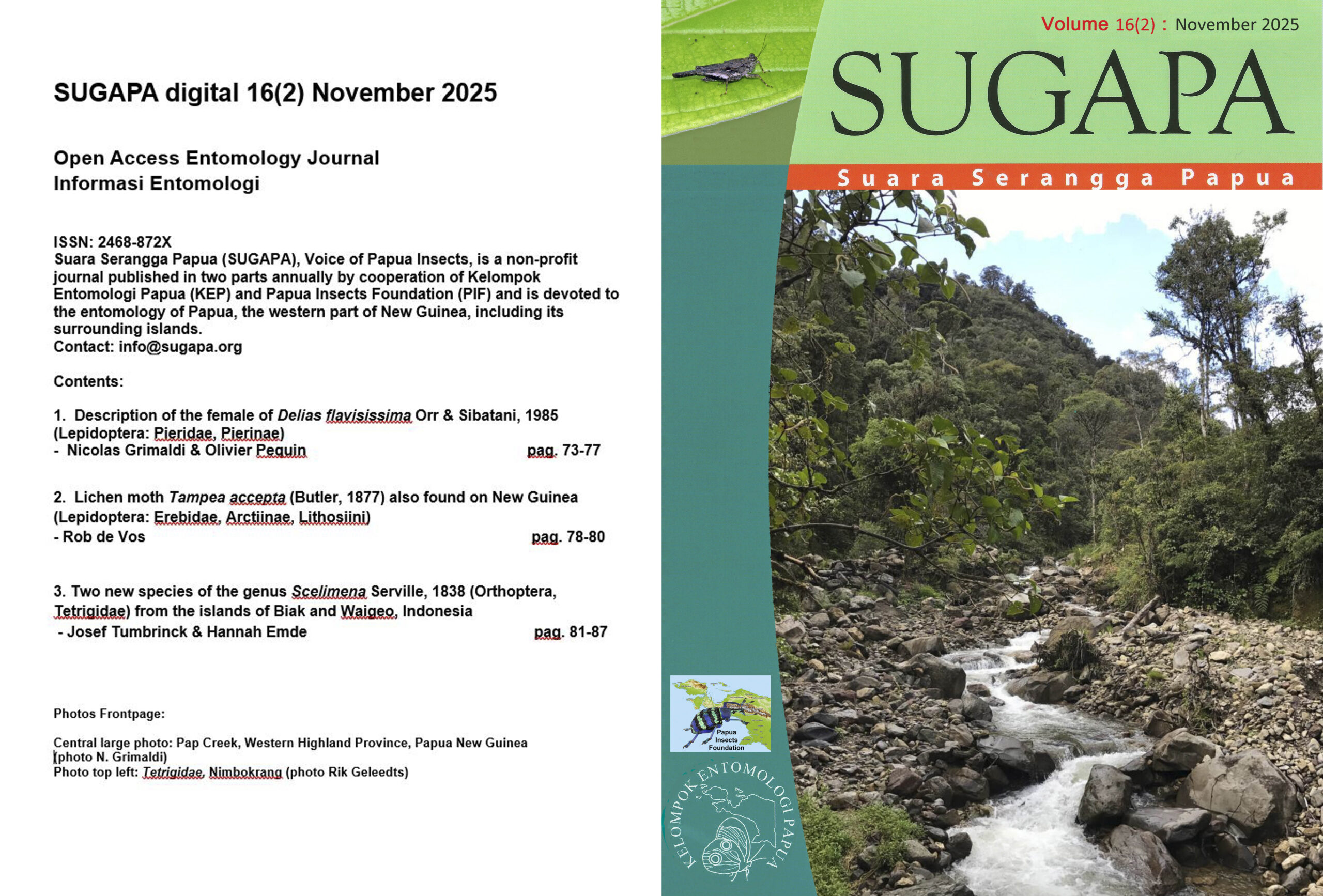Students’ Corner 3. Alfred Kharum Wayeni
Studi Keragaman Kupu-Kupu Superfamili Papilionoidea di Distrik Supiori Barat Kabupaten Supiori
Abstract: The aim of th is study was to get and actuallist concerning the diversity and distribution of butterflies (Superfamily Papilionoidea) at the Maudori village, District Supiori Barat, Kabupaten Supiori. Besides that special attention should be paid on endemie species. The survey was held during two weeks, for 6 till 19 August, 2007, using the Count transeet method at Transeet Line which was repeated 50 long the number of species still increased. Collecting data was finished after no increase was found any more.
The survey resulted in 66 species,consisting of 9 species Papilionidae, 8 species Pieridae, 15 species Lycaenidae and 34 species Nymphalidae. Only within the Nymphalids was still an increase in the number till the last day, 50 th at an increase of the number was weil possible in a longer period.
During the survey 51 species were observed at Maudori village, 39 species at Siwen and at Napisndi 38 species.The Index diversity for the whole area is 1.70,which is still in the middle category; for the village Maudori it is 1.63;for Napisndi 1.60and for Siwen 1.58,which figures are all in the same middle category. The difference in the diversity
index between the three localities is caused by different habitat, different altitude and the avaible foodplants. tipe habitat, luas lokasi, ketinggian lokasi dan juga ketersediaan sumber pakan.
The Index Similarity of the three localities is quite high: for Maudori and Siwen it is 0.64; for Maudori and Napisndi 0.63 and for Siwen and Napisndi 0.60, which is caused by the close distance between the three localities.
During this survey some endemie species for the Cenderawasih Bay islands were recorded as Pareronia chinki, Delias talboti, Ideopsis hewitsonii, Taenaris scylla and
Cirrochroa imperatrix.
Download PDF:
Students corner – Alfred Kharum Wayeni [SUGAPA 5(1) 2010]

 Open Access Entomology Journal
Open Access Entomology Journal


